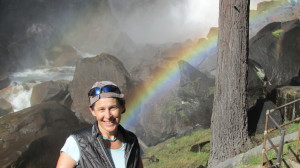Leap year reminds us of the importance of science and math. It is also an opportunity to ponder the meaning of time.
Our calendars don’t line up with the way the solar system works. We divide the year into 365 days. But our journey around the sun takes approximately 365.25 days.
So we add a day every four years. And since the discrepancy is not precise, we make further adjustments. 2000 was a leap year. But 2100, if we live that long, will not be.
Time measurement was originally a political and religious prerogative. The calendar reflects ancient religious ideas. The days of the week are named after pagan gods. Sunday belongs to the Sun. Saturday is for Saturn. Wednesday is Wotan’s day. Thursday is Thor’s day.
Political meaning is also woven in. July is named for Julius Caesar. August is named for Augustus. The holiday calendar is both religious and political. It includes President’s Day as well as Easter. These are days for civic duty and worship.
But religious and political authority give way to science when it comes to leap year. We trust that the astronomers did the math right. Maybe we should trust science on other issues—such as climate change and public health.
But science can only observe and calculate the passage of time. It cannot determine its meaning. What is the point, after all, of measuring time?
We measure to make meaning. Quantity matters. We ask how much, how many, and how long? The sciences are useful here. Economics quantifies time and money. Medical science advises about how much to eat and how long to exercise.
But science cannot answer the questions of why and what for. These are questions of quality. The doctors can help us live longer. But what is the point of a long life? The economists can help us make money. But what should we buy?
Eventually, the question of quality overshadows the question of quantity. We know that our days are numbered. But what shall we do with those days to make them worth living?
Science cannot say. To find an answer we turn to politics and religion, as well as poetry and philosophy. The question of quality takes us far beyond science.
Perhaps we should fill our time with love and beauty. Some argue that love transcends time. Shakespeare said that love is “not time’s fool.” It remains like a fixed star across the tempest of time.
Shakespeare saw time as a “bloody tyrant.” “Time’s pencil” scribbles on our faces. “Devouring time” makes war on beauty. Summer fades, roses die, and youth succumbs to “swift-footed time.”
For Shakespeare, love and art provide a glimpse of immortality, lifting us out of the flow of time. Art preserves youthful beauty in the eternal present, forever young and glowing. What should we do with our time? Shakespeare suggests we make love and make art.
A different suggestion is found in Plato and in Aristotle. They say that wisdom lifts us beyond the ravages of time. When we contemplate truth, we touch the eternal. What should we do with our time, according to the philosophers? They suggest we pursue wisdom.
Other poets and philosophers tell us that since our days are numbered, we should seize the day. Thoreau said that killing time does injury to eternity. We should make no compromise with time but live fully in each precious moment. To be here, now, immersed in nature’s wonder is another way to savor our constantly dwindling supply of days.
We seem to have wandered far from leap year. But we have actually circled back. When we discover that the calendar is a man-made, a kind of liberation dawns. If the year can be made to leap, then so can we.
Leap year reminds us that time is something we measure for our own purposes. Science shows that the sun and the seasons are fixed by natural laws. But the poets and philosophers teach that time is ours to enjoy. It is not merely a tyrant, as Shakespeare warned. It is also a gift that affords us the opportunity to make love, to make art, and to make meaning.



